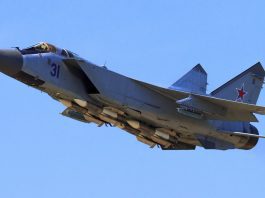When Ukraine began to run low on its stock of Tochka-U missiles in the early days of the war, its engineers faced a serious challenge. These short-range ballistic missiles had once formed the backbone of Ukraine’s rocket forces, hitting targets up to 120 kilometers away. But heavy use during the invasion quickly depleted supplies, and production had long since stopped — pushing Ukrainian engineers to develop Hybrid Weapons to keep their launchers active.
Rebuilding Firepower with Hybrid Weapons
Rather than let their launchers fall silent, Ukrainian technicians came up with a bold solution — they began combining unused missile parts with the explosive cores of old Soviet aerial bombs. This mix-and-match approach created what many now call hybrid weapons, a term that captures both their improvised design and surprising power.
Experts revealed that Ukrainian depots still held numerous missile bodies built in Soviet times but never fitted with warheads. Engineers realized these could be turned into working hybrid weapons if they attached explosive payloads. So, they took FAB-500 aerial bombs, removed their tail assemblies, and fitted them into the missiles’ nose sections.
This nearly doubled the missile’s destructive power. The original Tochka-U warhead carried about 162 kilograms of TNT equivalent, while the new hybrid weapons could pack up to 300 kilograms. Within weeks, Ukrainian teams tested and perfected their design, managing to restart small-scale production — a remarkable achievement during wartime shortages.
Innovation Born from Hybrid Weapons Design
The Tochka-U, also known by its code 9K79-1, is a single-stage, solid-fueled missile with two detachable parts — a rocket motor and a warhead. Engineers used this modular setup to fit the new explosive inserts without disturbing the missile’s balance or flight path.
Analysts suggest that some missile sections used in the hybrid weapons may have originally been designed for nuclear-capable Tochka versions. After Ukraine gave up its nuclear warheads in the 1990s, the missiles themselves remained in storage. These leftover bodies provided the perfect base for conversion into conventional hybrid weapons.
Thailand in shock — UK blacklists 4 Thai firms for allegedly supporting Russia’s war in Ukraine
To preserve aerodynamics, engineers likely placed the aerial bomb inside the existing warhead casing rather than replacing it. This allowed the modified missiles to be launched from Ukraine’s standard mobile systems without additional changes.
Though details of the process remain secret, the success of these improvised rockets shows Ukraine’s determination to adapt. Each missile now carries far greater explosive power, though possibly at the cost of some range or accuracy.
Even with those limitations, the hybrid weapons project is seen as a major success. One officer said their goal was simple — to make sure the launchers “never stayed silent.” Engineers and soldiers worked nonstop, testing and adjusting until the new weapons were ready for use.
Keeping the Launchers Firing
In the early months of the invasion, Tochka-U missiles were vital for halting Russian advances. They struck vehicle convoys, airfields, and supply lines. But as ammunition stocks ran low, Ukraine’s 19th Missile Brigade — which operates the Tochka systems — needed a way to stay in the fight.
Working closely with military engineers, they created these improvised hybrid weapons, extending the life of the Tochka-U fleet by months, perhaps even years. The FAB-500 bomb, weighing around 500 kilograms, proved to be the ideal fit. Once engineers removed its tail section, the FAB-500 could slide into the missile’s warhead casing almost perfectly.
These reworked hybrid weapons, sometimes called “Franken-missiles,” delivered devastating blasts far stronger than the originals. Although not as precise as newer Western-made systems, their destructive capability made them invaluable for Ukraine’s defense.
Keeping the launchers active was more than a tactical choice — it was essential for survival. By recycling Cold War-era components and repurposing forgotten stockpiles, Ukraine managed to maintain its long-range strike capacity even in the face of shortages.
The result is a story of ingenuity under pressure — transforming outdated technology into something powerful and effective. It proves that in modern war, innovation can be just as important as advanced equipment.
Through these hybrid weapons, Ukraine has shown that determination and creativity can turn the remnants of the past into tools of strength on today’s battlefield.







